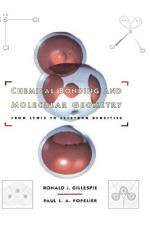|
This section contains 923 words (approx. 4 pages at 300 words per page) |

|
The notion that molecules might have specific geometric structures arose in the second half of the nineteenth century. Prior to that time, much debate existed among chemists as to whether molecules had definite shapes that could be determined experimentally. For example, French chemist Charles Gerhardt (1816-1856) emphasized his belief that they did not by writing different formulas for the same compound. He wrote BaO,SO, BaS,O, and BaO, SO, for barium sulfate.
Friedrick Kekulé was one of the first chemists to attack the problem of molecular structure. In 1857, he suggested that the carbon atom was tetravalent, that is, it could bond with four other atoms. He developed the tool of structural formulas to illustrate this concept, although the formulas created by Archibald Couper (1831-1892) at about the same time were far simpler and more efficient to use than were those of Kekulé. Neither...
|
This section contains 923 words (approx. 4 pages at 300 words per page) |

|


